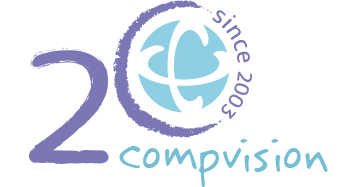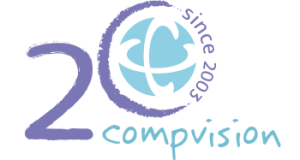Organizational growth
Job Architecture
A job architecture is a process in which an orderly, transparent organizational infrastructure is created, which includes the map of duties and presents the various levels in the company and the distinction between them – in a horizontal view of the entire company. The process usually comes in response to various issues that arise in companies, especially in growth stages.
- Multiple senior titles and lack of logic in relation to levels and titles – This difficulty is characteristic of many startups that have gone through a growth process. At the outset, hierarchy and titles are of little importance – this is when most of the effort is devoted to product development. However, as the company enters its rapid growth phase, the organizational approach becomes unwieldy and even makes it difficult to manage. The job architecture helps create a common language within in the company. This also happens in low-tech organizations, due to the fact that such an infrastructure has never been built, or has been built but is no longer suitable for the current state of affairs.
- Decisions on promoting employees in the company – many times the development and promotion of employees in the company is not done based on transparent, organization-wide criteria. In such cases, the decision-making process might be flawed. The job architecture helps to create internal career development paths for employees – an issue that is especially important for talent retention.
Designing the job architecture requires an orderly methodological process. We at Compvision have a working methodology, process and tools, all of which have proven themselves in the field time and time again. We support our clients and lead the process based on mapping the various roles in the company and assessing their importance to the organization according to 7 criteria that integrate different angles and considerations. The tool we build helps neutralize natural human biases and creates an orderly role map that can be used to make informed decisions.
Defining Job Descriptions and Titles
Along with the growth and development of companies, a time often comes when a lack of clarity develops regarding the definitions, boundary demarcation and names of various roles in the company. This can be seen when, for example, there are certain overlaps between positions, or there is a lack of correlation between the job description and the actual occupation, difficulty in finding the right title for new employees and more.
At the day-to-day management level, difficulties may arise due to the lack of clarity regarding the job descriptions, and often unrealistic expectations are created on the part of employees and managers regarding compensation, which are due to the lack of a transparent policy regarding job descriptions and titles.
As part of our mentoring process at Compvision in developing the company’s job descriptions and titles, we map the current situation, we examine the variety of roles in the organization and the functions each one performs. Next, we work to formulate a systematic, transparent map of occupations that presents a complete picture of the various roles in the organization, their definition and the titles associated with them, with the relevant adjustments and latest developments.
The company’s occupation map makes it possible to streamline the new employee recruitment processes for the organization, build employee development and retention plans and improve the company’s employee promotion and compensation processes.
Talent - Identification and Retention
In the competitive job market as it has emerged in recent years, it has become universally understood outstanding managers and employees are in high demand, particularly those with unique experience, skills and knowledge or in other words – talents. The challenges that companies face in relation to talents are the ability to recruit them, develop them within the company and retain them over time.
The first and obvious question is – who is actually considered a talent? How is a talent identified? But no less important and complicated than that is the question – how do you retain talents in a company?
At Compvision, we lead talent processes in companies, in which we define employees as talents according to a division into several groups. In order to identify the employees in the different groups, we use an internal evaluation done by the organization’s managers, who examine employees’ skills from different aspects – current state and looking at their future potential. Employee evaluation is based on criteria such as skills and knowledge, personality traits, day-to-day conduct, leadership and performance.
The talent process makes it possible to provide a targeted solutions for quality groups within the company as well as to proactively promote talents through the development of individually tailored programs. The process enhances the company’s competitive advantage in the market – improving the ability to recruit the right employees for various positions as well as developing the existing human capital in the company over time.
Succession
Studies show that the success rate of people in senior positions who have grown up within the company is significantly higher compared with newly-recruited personnel. Therefore, the more intelligently the organization builds the infrastructure and processes that succeed in growing and developing the potential inherent in the organization’s employees, the greater the chances of the company’s business success. In addition, in companies which do not have succession processes and programs, the greater the churn rate of employees and the lower the retention rate of employees over time.
In the process of developing the next generation and properly staffing the senior positions, the organization maps and identifies, for each of the various senior positions, names of potential candidates within the organization for the next 3-5 years. This mapping forms the basis for creating a detailed, transparent plan for developing the relevant people in the organization, as well as early recruitment of suitable personnel for positions where there is currently insufficient potential within the organization.
We at Compvision have developed a unique methodology, process and tools with which the stages of mapping, identifying and building a succession plan tailored to the relevant employees in the company are carried out. In addition, a recruitment program of essential employees will be derived from this to strengthen the succession within the company.
Measuring Success
How is success measured in a company? Measuring organizational success starts from the top – first of all at the company level, the business goals need to be defined and a way of measuring them clearly and definitively has to be worked out. Measuring success can take into account various aspects like profitability, revenue, customer base, market share, satisfaction, conversion rates, market penetration and more. It is important to formulate a limited number of goals that will be considered the main success goals of the company and from those goals to continue defining specific downwards-adjusted goals, trickling down to rest of the layers in the organization.
In order for the success measurement to be done in a way that reflects the company’s goals and also the actual execution capabilities of the various units, it is important to conduct a goal-setting and measurement process both from the top down and from the bottom up. It is also important to formulate the objectives clearly and specifically so as to allow for objective measurement and evaluation of the quality of performance.
We at Compvision specialize in defining and designing all the goals – at the company level, the unit level, and at the different executives level – in a way that enables us to gauge the success required at each organizational level. This is a process carried out jointly with the company’s managers and employees, so as to set expectations and ensure that there is as much organizational synchronization as possible.
One of the common tools for supporting the performance appraisal process is a bonus program that incentivizes and compensates managers and employees who accomplish the defined goals.

